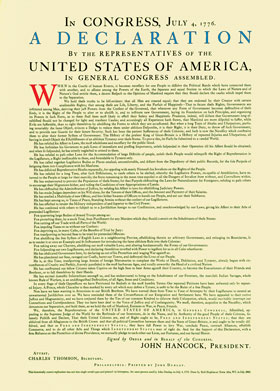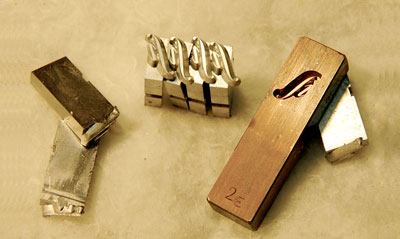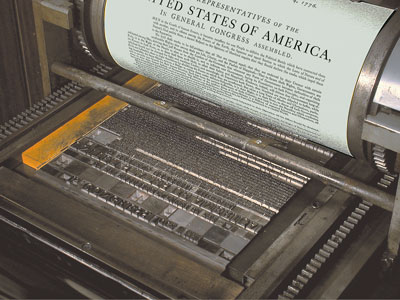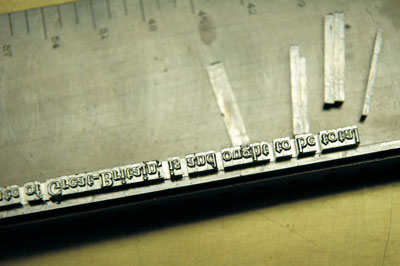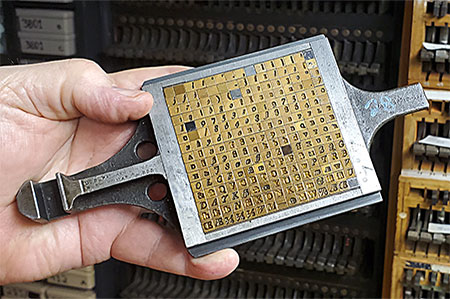Every single letter in the document was cast into metal excepting the initial letter “W” which, in this instance, is a copper photoengraving. Most likely, Dunlap used a wood type character for this large initial. Rich now has done the Dunlap version of the Declaration of Independence several times, with his work being utilized at the Newseum in Washington, D. C., at the Ben Franklin Printing Shop in Philadelphia, at the Crandall Printing History Museum in Provo, Utah, and others.
The body of the Declaration was cast utilizing the Monotype Composition Caster. The Matrix Case shown bottom left includes all the long s characters—items Rich sought for over 40 years before acquiring all that were needed for historically accurate projects of this nature.
In order to cast several of the larger characters including the long s character and its ligatures, Rich utilized original American Type Founders matrices. Many of these matrices were imported from the Caslon foundry in England by the L. Johnson Type Foundry of Philadelphia around 1860. Rich acquired these historic items in 1992 with the liquidation of American Type Founders.


